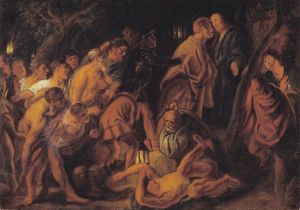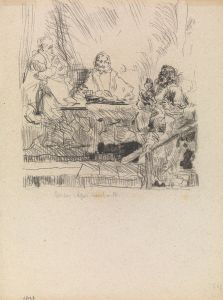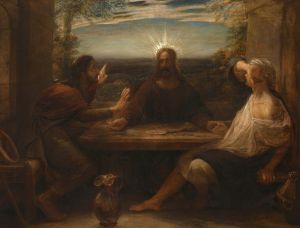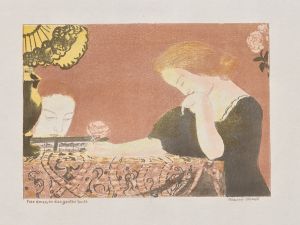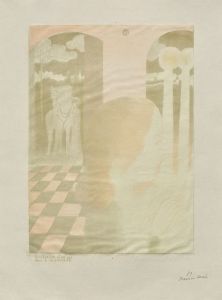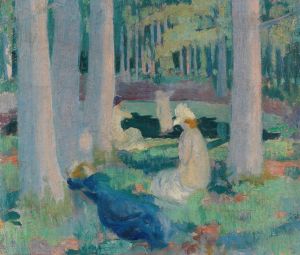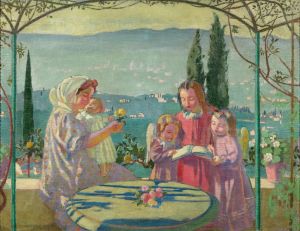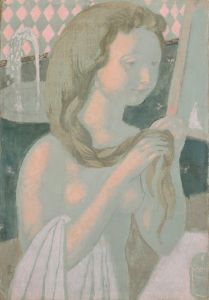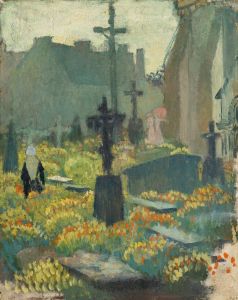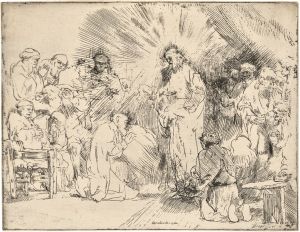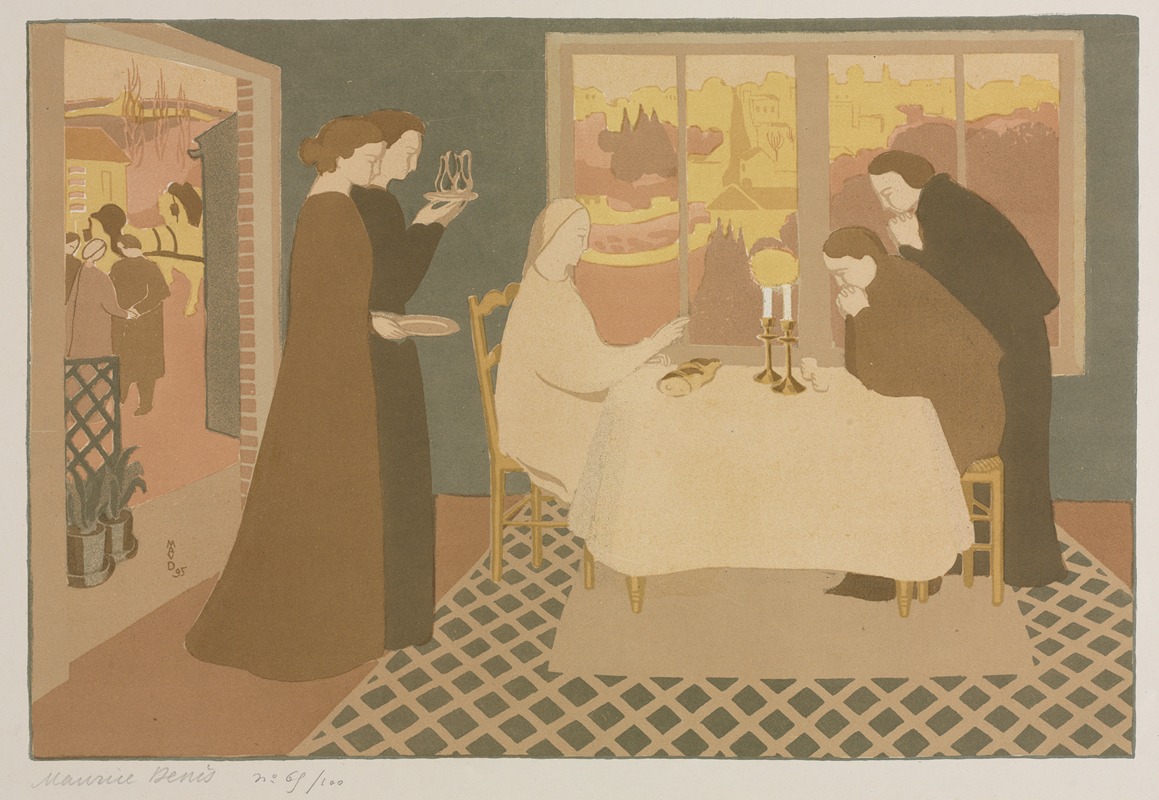
The Pilgrims at Emmaus
A hand-painted replica of Maurice Denis’s masterpiece The Pilgrims at Emmaus, meticulously crafted by professional artists to capture the true essence of the original. Each piece is created with museum-quality canvas and rare mineral pigments, carefully painted by experienced artists with delicate brushstrokes and rich, layered colors to perfectly recreate the texture of the original artwork. Unlike machine-printed reproductions, this hand-painted version brings the painting to life, infused with the artist’s emotions and skill in every stroke. Whether for personal collection or home decoration, it instantly elevates the artistic atmosphere of any space.
Maurice Denis's The Pilgrims at Emmaus is a painting created by the French artist in 1894. Denis, a prominent figure in the Symbolist and Nabi movements, was known for his deeply spiritual and decorative approach to art. This particular work reflects his interest in religious themes and his commitment to reinterpreting biblical narratives through a modern artistic lens.
The painting depicts the biblical story of the journey to Emmaus, as recounted in the Gospel of Luke (Luke 24:13–35). In this narrative, two disciples encounter the resurrected Christ on the road to Emmaus, though they do not initially recognize him. It is only later, during a shared meal, that they realize his identity. Denis's interpretation of this scene emphasizes simplicity and spirituality, aligning with his belief that art should convey profound truths through symbolic and decorative means.
In The Pilgrims at Emmaus, Denis employs a flattened perspective and bold, harmonious colors, hallmarks of the Nabi style. The figures are stylized rather than naturalistic, with an emphasis on their spiritual presence rather than physical realism. The composition is carefully arranged, with the central figure of Christ dominating the scene, surrounded by the two disciples. The setting is minimalistic, focusing the viewer's attention on the interaction between the figures and the symbolic nature of the event.
Denis's work often drew inspiration from medieval and early Renaissance art, and this influence is evident in The Pilgrims at Emmaus. The painting's decorative quality and spiritual focus reflect his admiration for artists such as Fra Angelico and Giotto, whose works he saw as embodying a pure and sacred artistic tradition.
This painting is part of Denis's broader exploration of religious themes, which he pursued throughout his career. As a devout Catholic, Denis sought to create art that was both modern and deeply rooted in Christian spirituality. His works often served as a bridge between traditional religious iconography and the innovative artistic movements of his time.
The Pilgrims at Emmaus is held in the collection of the Musée d'Orsay in Paris, France. It is considered an important example of Denis's ability to merge his spiritual convictions with his artistic innovations, contributing to the broader Symbolist movement and the development of modern art.






